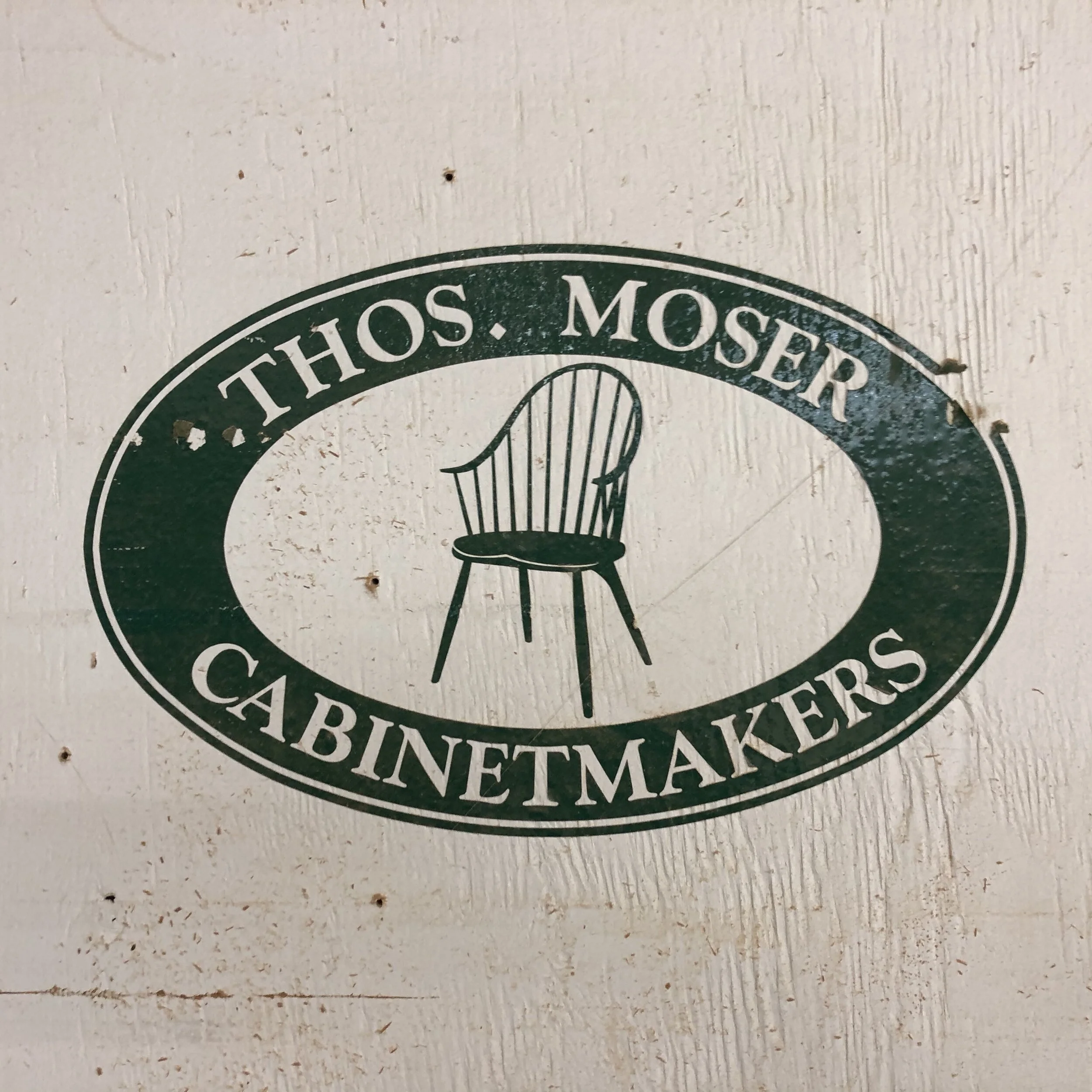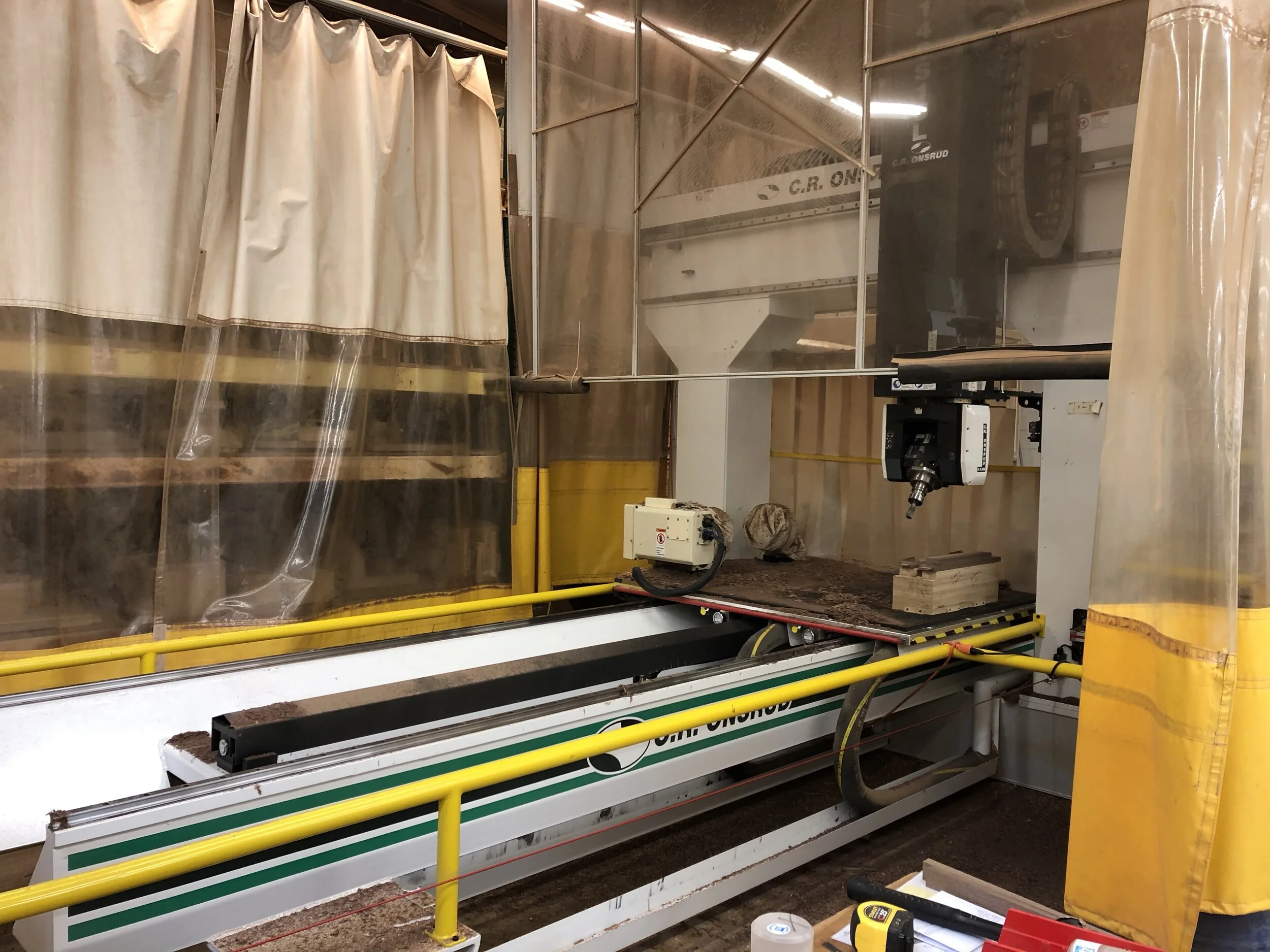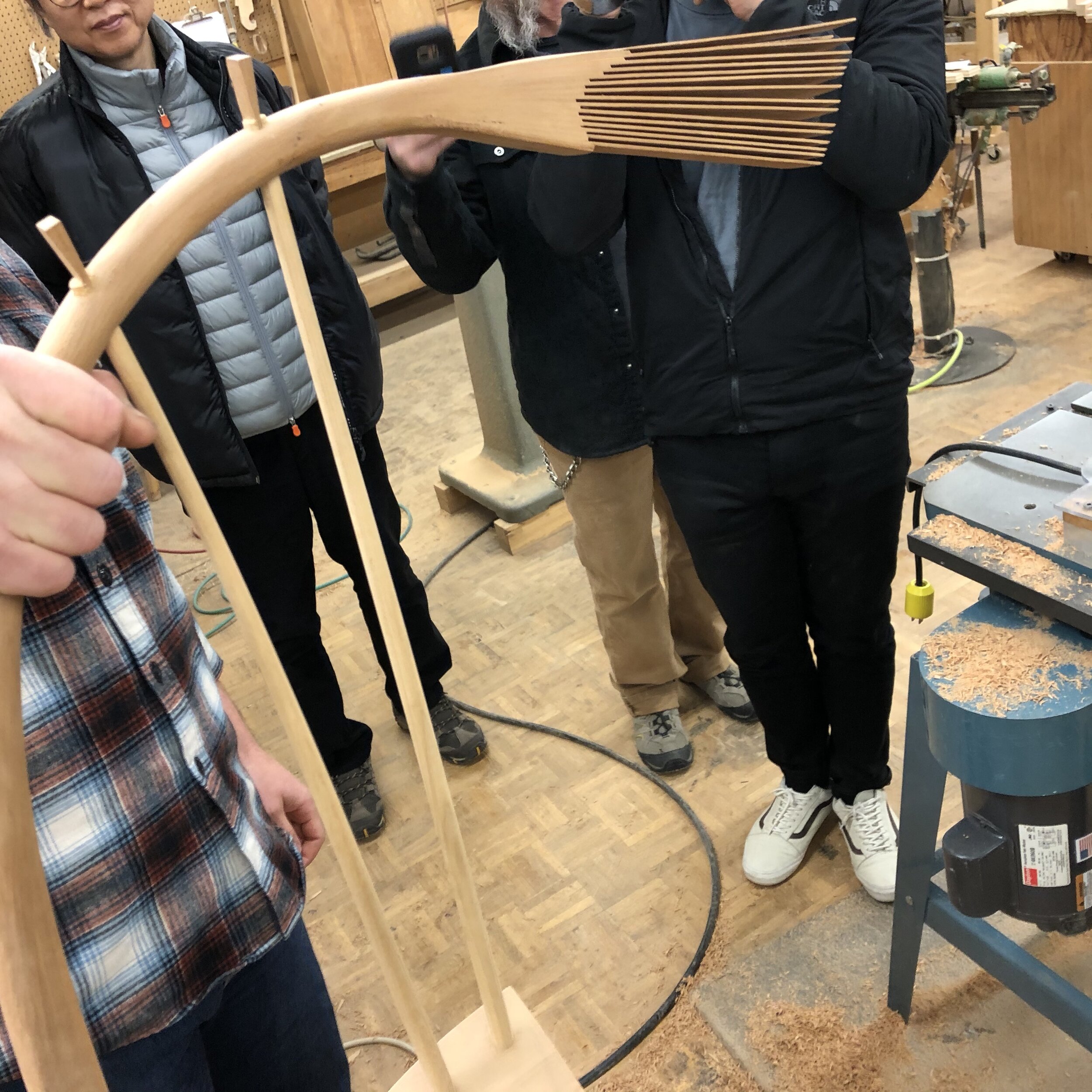Previously a professor at Bates College, Thomas Moser began making furniture professionally in 1972. What started out as a one-man shop evolved into a company that today consists of thirty-something employees, and annual sales of around $20 million.
Moser’s furniture straddles the line between mass-produced and hand-made furniture. It would be most appropriate to describe it as ‘production’ furniture, but even still it is probably an extreme example of that category. They describe their model as ‘high-mix, low-volume’, meaning that they offer a variety of designs, but don’t produce an enormous amount of any of them during any given year. Despite their impressive production capacity, their manufacturing queue is still determined by incoming orders. They don’t maintain a large inventory of finished goods, and for the most part their furniture is made-to-order, and typically has a 20-week lead time.
That being said, their facility is still configured much like the other factories that I have visited, where a production line begins with raw materials (and outsourced components) and ends with finished goods being inspected, packaged, and shipped.
The process begins with design development. While the Shaker, Pennsylvania Dutch, and other influences are evident, Moser’s designs still have a contemporary look that allows their furniture to fit in with almost any décor.
Past chair prototypes hanging on the wall
Side elevation drawings for chair designs
Their product development is led by two furniture designers who studied Furniture Design at Rochester Institute of Technology. While they still employ many aspects of a traditional approach, such as full-scale mockups and drawings, they also leverage newer technologies, such as CAD (computer aided design). Considerations for large-scale manufacturing are implicit in the development of new designs, particularly because a good portion of the joinery and shaping is completed by a CNC (computer numerically controlled) machine.
The production line begins with rough lumber, which they like to have delivered well in advance, in order to give it time to acclimate to the conditions in the factory. Cherry and walnut are the primary species used, which they procure through a broker who deals directly with regional sawmills in Pennsylvania (for cherry) and Missouri (for walnut).
This represents the amount of rough material that they keep on hand
The conditions in the entire factory are controlled to maintain a relative humidity of 40%
The lumber is cut to rough lengths, and milled flat, square, and to thickness.
Rough lumber being milled and processed according to a cut list for the various parts that comprise a piece of furniture.
This contraption is for gluing boards edge-to-edge in order to make panels. It keeps the boards tightly clamped together while the glue dries, and can hold many panels in a small footprint of shop space, thanks to its Rolodex design.
The factory has two different production lines, one for casepieces, and one for chairs, tables, beds, and other non-case furniture. The machinery on the casepiece line is more industrial, including several wide-belt sanders and dovetailing machines. The chair line has the types of machines you would see in a smaller woodshop, however, its mostly just for trimming and shaping parts, as the joinery is automated.
A dovetailing machine with a list of settings for various case piece parts
Machine cut dovetails on a drawer for a case piece
5-axis CNC machine cutting joinery on chair parts
A tenon on a chair part cut with a CNC machine
This chair seat was made by first gluing up a panel from three separate boards, which was then shaped with a CNC machine
Some parts are made with jigs that employees use on saws and shapers
Batches of parts ready for assembly
Tight-radius curved parts are made using a technique called bent lamination
A portion of the lumber that they buy is sent green (not yet dried) directly to a re-saw mill in Pennsylvania, where it is cut into thin laminates and sequenced (kept in order) before continuing on to the factory.
These laminates, still in sequential order, are then coated with a thin layer of glue, and pressed in a form.
To accelerate the curing of the water-based glue, the parts (still in their form) can be put in this machine that uses radio waves to agitate the water molecules in the glue, much like a microwave oven.
Because the laminations are kept in sequence, once shaped, the glue lines are undetectable on the finished part, creating the appearance of a solid piece of wood.
Spindle parts, such as those used for Windsor-style chairs, are outsourced to a nearby manufacturer, who uses lathes with long profiled knifes that can quickly and consistently cut the taper and any other details specified in a design much faster and more efficiently than a turner could do in-house.
Rather than use an assembly-line format, like most high-volume factories, where a unit moves through sequential stations and a worker or machine repeatedly performs the same process on each unit before it progresses to the next station, Moser opts for a production model where the same employee conducts each step of assembly from start to finish. This means that unlike the assembly line model, they cannot use unskilled labor. However, they noticed that this leads to more fulfilled and happier employees that produce a higher quality of work. Each piece is actually signed by the employee that made it, which not only adds a personal touch, but also causes employees to take personal pride in their work.
An assembly cart filled with parts that a worker will push station-to-station as they assemble the chairs
While roughly half of their production is sold to individual consumers through their website and four brick-and-morter retail showrooms (Boston, New York, Washington D.C., & San Francisco), the other half is sold to institutional consumers who may order several hundred units of the same piece.
These chairs, called the NYPL Chair, as the design was originally commissioned for the New York Public Library, is part of a large order for one of the dining halls at Harvard University.
They also have a division which they refer to as ‘off-line production", that designs and produces custom orders. While it varies year-to-year, this business line generally represents 20% of overall revenue.
This large table, measuring 336” x 78” and costing $56,000, is part of an order of 8 custom conference tables for the New York Federal Reserve.
After assembly, the pieces move through finishing and upholstery.
They typically use a proprietary linseed oil-based finish, which they apply with an airbrush and then wipe.
They offer a wide spectrum off leather options, and customers also have the option of supplying their own fabric if they wish.
Finished pieces curing
After finishing, pieces are inspected before being tagged, packaged, and shipped
Final inspection
Prepared for shipping
It was a fascinating experience seeing how high-quality wooden furniture is made at scale. Their furniture is priced at the high end of what one would pay for custom furniture from a small maker that does not enjoy the same efficiencies of scale and automation as Moser. They openly revealed that their gross margin is 50% (revenue minus, materials, labor, fixed overhead - not including SG&A, which are expenses related to marketing, depreciation and amortization of equipment, administrative expenses such as accounting, etc).
Moser really represents its own category of furniture, where they still offer a hint of the human element and are a small enough operation that they can source enough premium material without sacrificing consistency. However, you might see 700 of the same chair that you paid over $1,500 for at the New York Public Library.
Their furniture also does not represent the same exercise in craftsmanship that you receive from a small maker, since all their joinery and much of their shaping is automated. While most can’t distinguish hand-cut dovetails from machine-cut, the point is that Moser is capturing a big chunk of the economic profit that a small maker loses by doing things the old fashion way. The consumer doesn’t receive the exclusivity and craftsmanship that goes into limited production furniture, even though it is implied by the price that they are paying, and lead times they are given.
That is not to bash their product or their business, as it is still a great option, especially for institutional and large commercial clients with orders too large for a small maker to fulfill. Their designs are attractive, and Moser is still a family-owned business that manufacturers in America using sustainable practices and responsibly sourced materials. It can also be argued that while their designs aren’t as exclusive, they are somewhat recognizable, which can create a sense of prestige in that others may note the luxury and quality associated with it.
I am grateful to have had the chance to visit their factory, and am glad that there are enough people who appreciate quality furniture to allow such a business to exist.






























